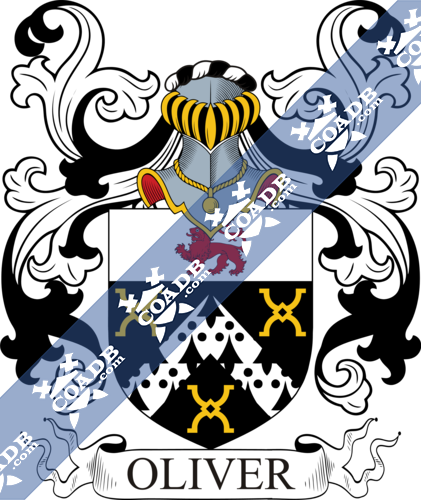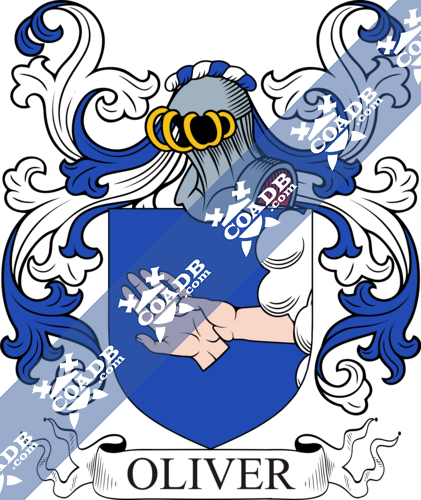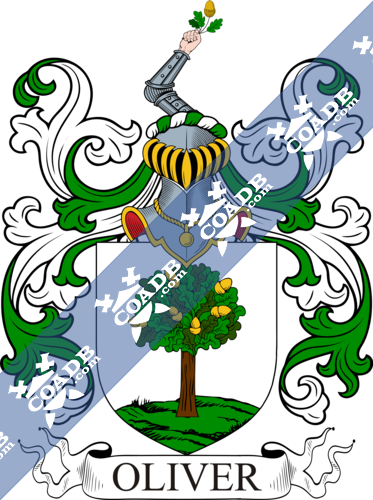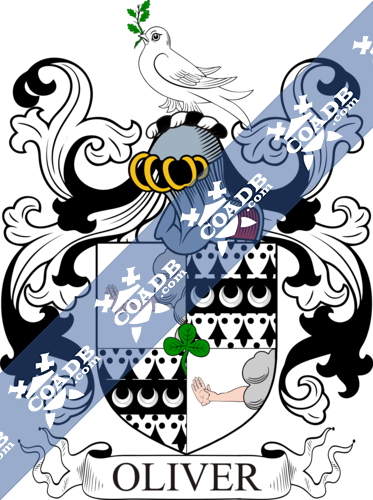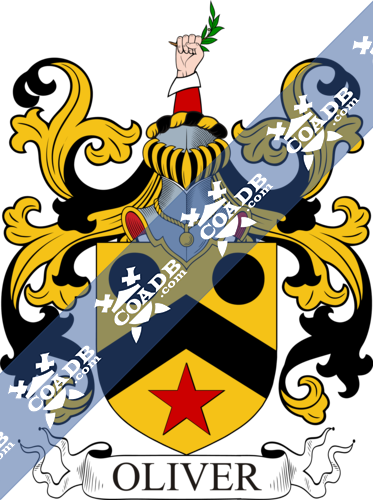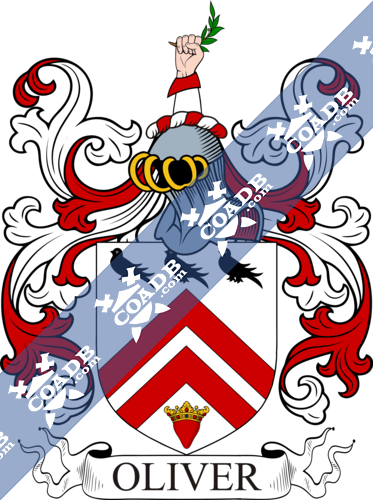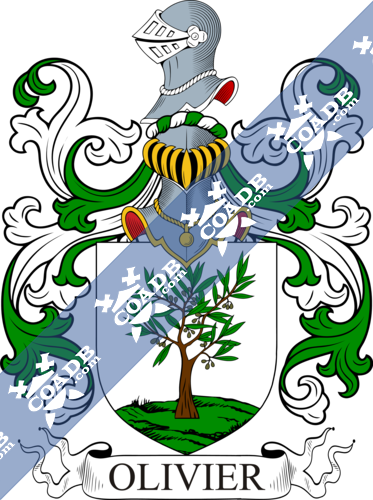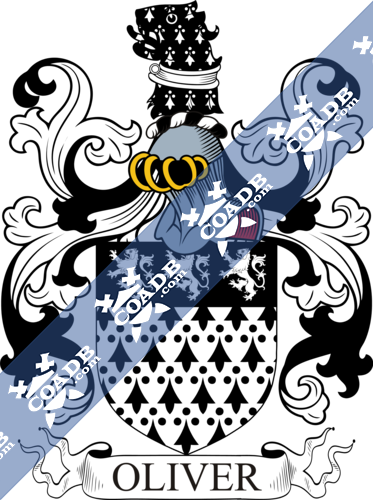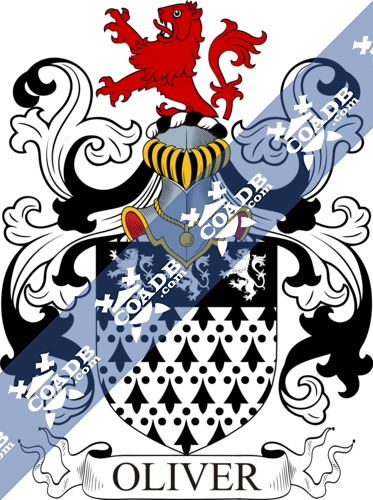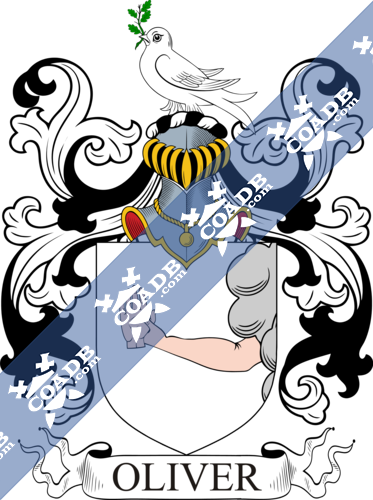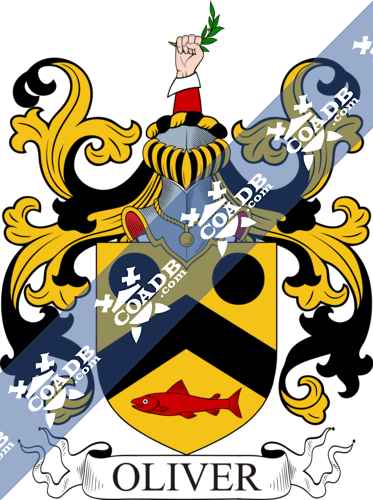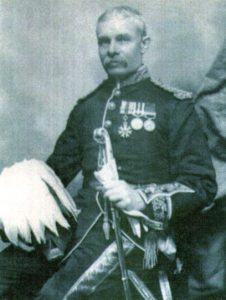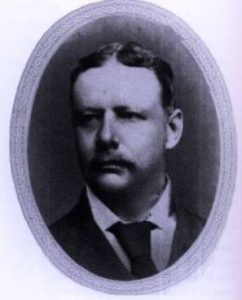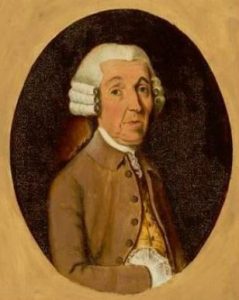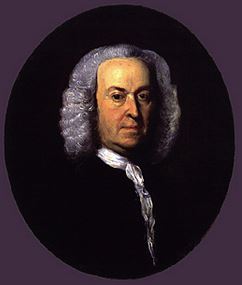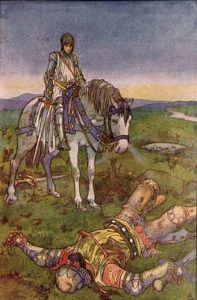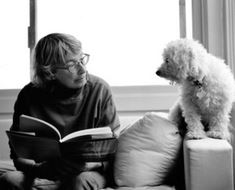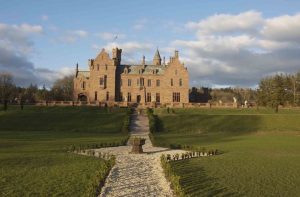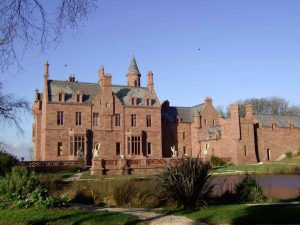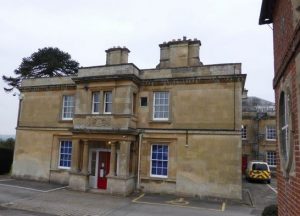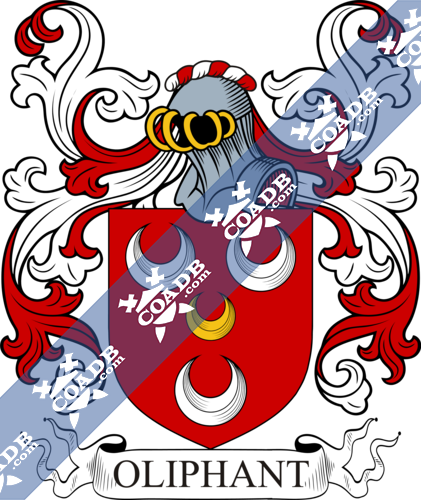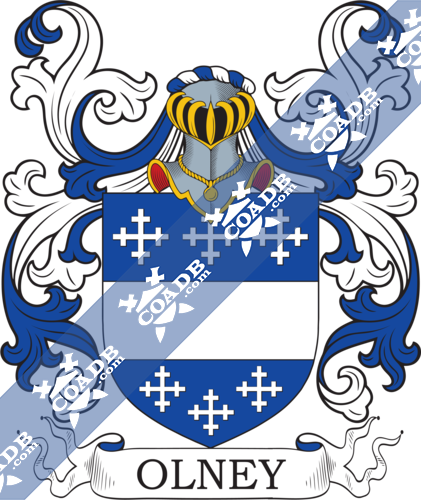Oliver Family Crest, Coat of Arms and Name History
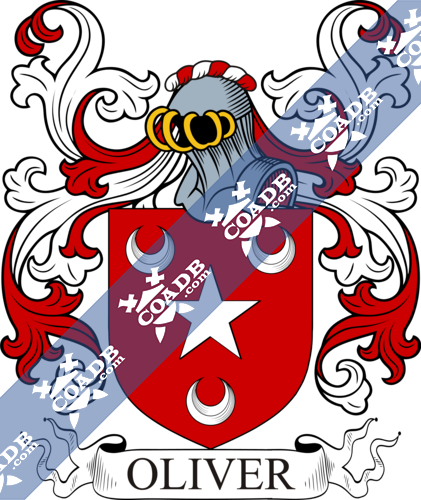
Oliver Coat of Arms Gallery
Don’t know which Coat of Arms is yours?
We can do a genealogical research. Find out the exact history of your family!
Learn MoreSurname Name Meaning, Origin, and Etymology
This last name is a medieval baptismal one meaning “the son of Oliver”, an Anglicized spelling of the French personal (first) name Olivier, popularized in France by one of Charlemagne’s (742-814 AD) Paladins, a group of twelve warriors who were important members of his court, idolized in The Song of Roland, where they represented Christian valour against the Saracen army invading Europe. This given name was generally associated with the Latin term olivarius, a person who planted olive trees (or sold olive oil), however, it would also be connected to the Germanic names wulfa (wolf) and xarja (army), or the Old Norse or Scandinavian/Danish name Olefir/Olaf, or the West German name from the words ala (all) and wera (true) or alf (elf) and hari (warrior). It may also be a cognate of the ancient Germanic/Portuguese/Spanish name Alvaro. The name was introduced in England during the Norman Invasion of 1066 AD, but became somewhat rare during the Restoration due to the fact it was born by the rebel Oliver Cromwell from the English Civil War, but was revived due to the popularity of the famed author Charles’ Dickens book Oliver Twist, published in 1838. The name was documented in the Domesday Book, a survey of England and Wales ordered by William the Conqueror, as Oliverus. One source asserts the name has Ancient Roman or Greek origins. It should also be noted the olive branch has been a symbol of peace for centuries.
One source states the name was first used by the Strathclyde-Briton (Strathclyde was an early medieval kingdom of the Britons, a Celtic people who lived in Great Britain since the Iron Age) and was a named for a person who lived in Roxburgh, a county in the Southern Uplands of Scotland.
Oliver Genealogy & Surname in Scotland
It is claimed Scottish people bearing the name might be descended from the Old Norse use of this name Olaf or Olefir. It is said the Olivers of Scotland descend from a familythat settled in the borderlands between England and Scotland during the 1200s AD. The Surnames of Scotland, published by George Fraser Black in 1946, states “Walter Otifer (Oliver?) witnessed William the Lion’s gift of the serf Gillemachoi de Conglud with his children and all his descendants to the bishop of Glasgow. c. 1180. Olyver, son of Kyluert, was one of the followers of the earl of March at end of twelfth century. He was probably ancestor of the Frasers”. The main area they controlled was Jedforest, a heavily wooded area that was once held directly by the King and his tenants in chief were the Olivers, who held land there by Crown charter, and they later were their under Clan Douglas in the feudal system. Some claim there are a sept of Clan Fraser but others claims this is an erroneous assertion. Instead, they were a sept of the Highland Clan Fraser of Lovat. Many members of the family were merchants in the city of Berwick on Tweed.
Spelling Variations
Common spelling variants or names with similar etymologies include Oliver, Ollier, Olliver, Olyver, and Olver. Foreign equivalents include Oilivear (Irish), Oilvereis (Scottish Gaelic),Oliviero (Italian), Oliverio (Spanish), Oliver (Hungarian), and Olivier (French). The Breton form of the name is Olier.
The website Electric Scotland states: “Similarities in name, origin, and the vagaries of spelling in early documents have confused many Olivers with Oliphants, and thus, many records of one may in fact refer to the other, particularly in areas outwith the Borderland, notably Perthshire, where many Oliphants settled”.
Popularity & Geographic Distribution
The last name Oliver ranks 248th in popularity in terms in the United Status as of the 2000 Census. The name ranks particularly high in the following six states: Alabama, Virginia, South Carolina, Arkansas, Rhode Island, and Wyoming. The surname is even more common in England, where it ranks 160th. It ranks highest in the following counties: Cornwall, Northumberland, and Durham. In Scotland, the name Oliver rankest highest in Roxburgh, whereas in Wales, the surname is most frequent in Cardiganshire. The name is common throughout the English speaking world: Scotland (320th), Wales (180th), Ireland (1,125th), Canada (421st), New Zealand (149th), Australia (22nd), and South Africa (460th).
The 1890 book Homes of Family Names by H.B. Guppy, states the following in regard to this surname: “Distributed over the greater part of England. Its principal homes are as follows: —In the north, in Northumberland and Durham, whence it extends into the Scottish border counties; in the west, in Herefordshire; in the east, in Lincolnshire; in the south – west (including the contracted form of Olver), in Cornwall; and in the south – east, in Kent and Sussex”.
Early Bearers of the Surname
A one Walter Olifer was documented in Scotland in 1180 AD. Jordan Oliueri was listed in the Pipe Rolls of Cornwall in 1206 AD. John Oliver is documented in the Charter of Soltre Hospital in Scotland in 1250 AD. The Hundred Rolls of 1273 AD, a census of Wales and England, known in Latin as Rotuli Hundredorum lists one bearer of this surname: Peter filius Oliver in county Oxfordshire. Kirby’s Quest lists one bearer who lived during the reign of King Edward III of England (): Walter Oliver in county Somerset. A one Johana, daughter of Thomas Olver, was listed in the Register of St. Columb Major, Cornwall in 1582 AD. Two early marriages involving this last name include David Oliver to Sarah Cocks at St. George’s Chapel Mayfair in 1750 and Richard Ollier to Charlotte Hull in 1801 at the same church.
History, Genealogy, and Ancestry
A one William Oliver was born in 1390 and he married Margaret Carew with whom he had a son named Thomas. Thomas was born in 1417 in Bridport, Dorset, England, and he married Alice Battiscombe, with whom he had two sons: John and Thomas. His son Thomas was born in 1445 in Woodbridge, England. He married Joan Mumford and they had a son together named John. This John Oliver was born in Parham, Suffolk in 1469. He married Jane Montfort, and they had two issue: John and Thomas. His son John was born in 1504 at St. Thomas Bristol. He married Elizabeth Rowland and had a son with her named Thomas. This Thomas Oliver (or Olyver) was born in the same town in 1530 and he married Magaret Alkin. They had two issue: John and Elizabeth. His son John Olyver was born in Bristol, Gloucestershire in 1555. He married Elizabeth Ham and had numerous issue with her: Robert, Margaret, Mary, Thomas, Edward, John, James, Toby (or Toly), William, Henry, Ann, and Francis. His son Thomas Oliver, known as “The Immigrant” was born in Bristol in 1583 and was a doctor who went to Boston, Massachusetts in the United States. He married twice: Elizabeth (surname unknown) and Ann Squire. He had several issue: Peter Sr., Nathaniel, Abigail, Samuel, Daniel, James, Elizabeth, William, Peter, Reverend John, Elizabeth, Thomas, Jonathan, Anne, and Peter. His son Peter Oliver Sr., was born in England around 1609 and came to the United States with his father (assumedly). He married Sarah Newgate and had several issue with her: John J., Sarah, Mary (Williams), Samuel, Nathaniel, Peter Jr., James, and Daniel. Peter Jr. was born in 1655 in Boston, MA. He married Susannah Soule and he had issue with her: Joseph, Peter, John, Susannah, Russell, and James. His son Joseph was born in 1706 in Rochester, Plymouth County, MA and he married Anne Russell. They had five children together: Peter, John, Joseph, Susannah, and Russell. His son Joseph was born in the same town in 1739. He had a daughter named Patience, who married Asa Croasmun and had six children with her.
A one Richard Olyver was born around 1540. In 1567, he married Thomasyn Bond in Morewenstow, Cornwall, England. They had a daughter together named Katherine.
A one Thomas Oliver was born in Bay City, Maryland in 1763. He married three times, Sara Edwards in 1788, Naomi Smith in 1816, and Eleanor Spriggs in 1827. He had the following issue: William, Nancy Sarah (Rickard), Rebecca Elizabeth, Elizabeth, John Wesley, Thomas Jr., Charles, Sarah, Leonard, Hiram, and Emily. His son Thomas was born in Jackson, Ohio in 1790. He had a son named Andrew who was born in the 1820s. He in turn had a son named John who was born in Mason, West Virginia, around 1850. He married Minnie Florence Landers and had a son with her named Otto Vernor Oliver who was born in 1906 in the same town. Otto in turn had a son named John. John was born in the 1920s.
Another Oliver family (from Derbyshire Peak District in England in 1870) went to Ontario, Canada. This family’s eldest son John was a pioneer settler and farmer in the province of British Columbia.
The famous genealogist Bernard Burke’s book “The Landed Gentry” discusses five branches of this family: 1) Oliver of Tygrony (Cherrymount) and 2) Olivier of Potterne, the first of which I will highlight in some detail in the next paragraph.
The first begins with a mention of John Ryder Oliver, Esquire of Tygrony, Cherrymount in county Wicklow, who was a Major in the Royal Army, born in 1834. In 1864, he married Georgina Frances, daughter of G.M. Harrison, Esquire of Stanground, and had issue with her: John Charles Arthur (1871). Burke traces the lineage/ancestry back to Charles Oliver, Esquire of Cloghanodfoy, county Limerick, son of Captain Robert Oliver who was a Member of Parliament, who was High Sheriff in 1692. In 1670, he married Elizabeth, daughter of Sir Percy Smyth, Knight of Ballynatra, county Waterford, and had four daughters with her and a son. His son was named Robert and he was Colonel of the Limerick Militia, as well as Member of Parliament for said county. In 1702, he married Katherine, daughter of Sir Robert Southwell and he later married Susanna, daughter of James Knight. He died in 1738 at the age of 67, and had two daughters named Jane (who married Boyle Aldworth of Newmarket) and Elizabeth (who married James Ellard), as well as three sons: 1) Robert of Cloghanodfoy (Castle Oliver) who was a Member of Parlaiment and married Jane, daughter and co-heir of John Silver, 2) Philip, of Kilfinan, who was a Member of Parliament for Kilmallock and married Lucy, daughter of R. Gray, and 2) John. His son the Venerable John Oliver, was Archdeacon of Ardagh in 1720, who married Elizabeth, daughter of John Ryder, Archbishop of Tuam, and had the following children with her: John, Robert Dudley (a Admiral in the Royal Navy who married Mary Saxton in 1805), Charles Dean (married Sarah Roberts), Richard, Silver (Rector of Loughall who married Alicia Maria Madden), Nathaniel Wilmot (Major-General in the army who married Eliza Baxter in 1811), Alice (married James, 2nd Viscount of Lifford and Dean of Armagh), Anne (married William Disney), and Elizabeth (married Robert Rogers Aldworth of Newmarket). This John died in 1778 and was succeeded by his eldest son, the Reverend John Oliver of Cherrymount, who was Rector of Swepstone in county Leicester. In 1807, John married Sarah Cather, daughter of Dudley Baxter, Esquire of Atherstone in Warwick, and had children with her: Richard (1812), Charles (1816), Henry Ryder (1818), Dudely (born 1821, married Anna Marie Steill), Elizabeth, Alicia Marianne (died 1860), Susan Catherine (married Reverend James William King Disney), and Isabella (married Henry Murray in 1840). He died in 1832 and was succeeded by his eldest surviving son: John Dudley Oliver. This John was an Esquire of Cherrymount in county Wicklow and a Justice of the Peace. He was born in 1809 and in 1834, he married Mary Susanna, daughter of Valentine Green of Normanton-le-Heath, and had twelve children with her: John Ryder, Charles Valentine (Captain of 66th foot), Edward Dudley (Captain of 51st foot), Henry James (Captain 22nd Regiment, married Frances Martha Graces), Hans Mortimer (Lieutenant 3rd Buffs), Robert Wilmot, Oswald, James William, Susanna Eleanor (married Reverend John Woollam), Mary Theodosia (married Henry Hodgson, Esq.), Frances Georginia (married Frederick Lewis Roy of Nenthorn, Kelso), and Catherine. His second wife was Elizabeth, daughter of Wyndham Carlyon Madden, and he had one daughter with her named Mary Beatrice. His third wife was Sydney, daughter of William Tongue of Comberford Hall) and he had a son with her named William Dudley, born in 1867. He died in 1870. The Oliver Family Crest or Oliver Coat of Arms was blazoned in heraldry as follows: Or, a chevron between two pellets in chief and a mullet naiant in base proper. Crest: A hand holding a branch of olive proper.
Early American and New World Settlers
The book Genealogical Guide to the Early Settlers, mentions 7 people bearing this surname:
1) John Oliver of Boston, 1632, came aboard the William and Francis, and was the brother or nephew of Thomas, and was a representative in 1638, who married Joanna Goodale, and had a daughter with her named Mary in 1640 who died two years later
2) Peter Oliver of Boston, son of Thomas, was born in England in 1618 and was a freeman in American in 1640 who was a trader. He was one of the founders of Old South or Third Church. He married Sarah, daughter of John Newgate, and had issue with her: Sarah, Mary, James, Daniel, and others.
3) Samuel Oliver of Boston,who was born in England, and was admitted to the church 1643, and was of the Artillery Company in 1648. He married a woman named Lydia and had issue with her: Patience, Deborah, and others.
4) Thomas Oliver of Boston, 1632, son of John and grandson of Bristol, England, who came aboard the William and Francis from London in 1632, along with his wife Anne, daughter Abigail, and six sons.
5) Thomas Oliver of Salem, MA, a calendar from Norwich, he came from Norwich, England at the age of 36 aboard the Mary Ann and was of Yarmouth. His two sons were Thomas and John. His wife had a daughter (probably) named Bridget Oliver of Salem, who was charged with witchcraft in 1680.
Robert Oliver of Crediton, age 20, came to St. Christopher’s aboard the Margarett in March 1633. A one Edward Oliver was documented as living in Virginia in 1623 “in the maine”. A one Margaret Oliver was buried in Christ Church, Barbados in 1679.
Other early settlers in colonial America bearing this last name include Nicholas Oliver (Virginia 1638), Edward Oliver (Virginia 1638), Geoffrey Oliver (Maryland 1646), Mary Oliver (Virginia 1651), Brattle Oliver (Boston, MA 1712), and Isaac Oliver (Virginia 1714).
A one Fransico Oliver came to New Spain (Mexico) in 1536 AD. Some of the earliest bearers in Canada were John Oliver, a boatkeeper, landed in St. John’s in Newfoundland in 1681 and Richard Oliver in Nova Scotia in 1774. In Australia, in 1839, several members of the Oliver family (Ann, Augustus, Charles, Charlotte, and Edward) arrived aboard the Asia and settled in Adelaide, the capital city of the state of South Australia. One of the earliest bearers in New Zealand was James Oliver, a servant aged 13 years, who settled in Port Nicholson in 1841 and arrived aboard the Lady Nugent. In the same year, James and Ruth Oliver came to New Plymouth, New Zealand aboard the Amelia Thompson.
Early Americans Bearing the Oliver Family Crest
Charles Bolton’s American Armory, published in 1927, contains five entries for the surname Oliver:
1) Erm on a chief sa 3 lions ramp arg an escutcheon of pretence. the bookplate of John Proctor Anderdon of Antigua, who married in 1785 Anne, daughter of Thomas Oliver, Lieut. Gov. of Mass. Oliver’s West Indian bookplates, 1914, No. 3.
2) Or 3 garbs gu (Mountford arms) Crest: a demi-lion holding a garb. Bookplate Peter Oliver, Andover, Mass.
3) Quart of 8: 1 and 8: Arg from a cloud at the sinister an arm in fess holding a dexter hand couped at the wrist and dropping blood; 2: Vert a chev or bet 3 leopards’ faces (Fitch); 3: Gu on a chief or 3 crosses potent– or mallets? (Lynde); 4: Az a fleur-de- lis arg (Digby); 5: Per bend arg and sa 3 roundels within a bordure all counterch (Pynchon); 6: Arg 2 bends engr sa (Empson?); 7: Gu a chev or bet 3 apples gu leaved vert (Appleton). Crest: a martlet arg holding a sprig. Motto: Pax in bello. Bookplate Peter Oliver. Also of “Oliver,” with Pax aut bellum.
4) Quart 1 and 4: Arg from a cloud on the sinister an arm in fess holding a dexter gauntlet gu; 2 and 3: Vert a chev or bet 3 leopards’ heads [or] (Fitch?). Crest: a martlet arg holding a sprig. Motto: Pax quaeritur bello Bookplate Andrew Oliver of Mass. (engr. by Paul Revere). The bookplate of Chief Justice Peter Oliver, Boston, 1713-91 had for motto: Fideli amore. Arms on his portrait. An early painting impaling Lynde is engraved in Heral. Jour., vol. 3, p. 31.
5) Arg an arm from the sinister side fessways the hand grasping a dexter hand couped at the wrist, all proper. Crest: a martlet arg holding in its beak a sprig [vert]. Engr. on a paten made by Hurd. Museum of Fine Arts, Boston, from Mrs. Ambrose Dawes. The same coat quartering Fitch (vert a chev bet 3 leopards’ faces or) and impaling Lynde (Gu on a chief or 3 crosses potent) was engraved as a bookplate, probably by Hurd. Whitmore’s Elem. of Heral., p. 75.
Matthew’s American Armoury and Blue Book mentions one bearer of this surname. Charles August Oliver, A.M, M.D. was born in Cincinnati, Ohio in 1853 who graduated from the University of Pennsylvania and lived in the city of Philadelphia. In 1888, he married Mary Schermerhorn, daughter of Lewis B. Henry of New York City, and had two issue with her: Norris Schermerhorn (1889) and Katharine Powell (1892). He more the following coat of arms: Ermine, on a chief sable three lions rampant argent, with motto: Animo et fide. He was the son of George Powell Oliver and Maria Louisa Suarez (whose father was from Spain). He is a direct descendant of Nicholas B. Oliver who came to the US in 1778.
Mottoes
I have identified nine Oliver family mottoes:
Dieu mon appui (God my support), related to Psalm 27 in the Bible, turned into French hymn
Non sine Oliver (Not without Oliver)
Ad foedera cresco (I grow for treaties, or I gain be treaty)
Sicut oliva virens laetor in aede Dei (As the floursing olive, I rejoice in the house of God)
Fac similiter (Do likewise)
Ito tu et fac similiter (Go thou and do likewise)
Nunquam fallentis termes olivae (A branch of the never-failing olive)
Pax in bello (Peace is produced by war)
Animo et fide (Courage and faith)
Grantees
We have 13 coats of arms for the Oliver surname depicted here. These 13 blazons are from Bernard Burke’s book The General Armory of England, Ireland, and Scotland, which was published in 1848. The bottom of this page contains the blazons, and in many instances contains some historical, geographical, and genealogical about where coat of arms was found and who bore it. People with this last name that bore an Oliver Coat of Arms include:
1) Oliver, before Gascoigne, Richard Philip, of county York, quarterly arms, 1810
2) Oliver, of Melton Lodge Mowbray, county Leicestershire, and Brill House, Bucks.
3) Oliver-Massey, Richard Mansell, of Melton Mowbray, county Leicestershire, Brill House, Bucks, 1844
4) Oliver to Oliver-Bellasis, Richard John Erskine Oliver-Bellasis, son of Richard Aldworth Oliver, Lieutenant of the 20th Hussars, 1879
Notables
There are hundreds of notable people with the Oliver surname. This page will mention a handful. Famous people with this last name include: 1) Donald H. Oliver (1938) who is a Canadian lawyer and politician who served as Senator for South Shore, Nova Scotia from 1990-2013, 2) Daniel Oliver (1830-1916) who was an English Botanist who was a Professor at University College in London, 3) Bernard P. Oliver (1916-1995) who was a scientist known for his contributions to radar, television, and computers who founded Hewlett Package laboratories and pioneered the search for extraterrestrial intelligence (SETI),4) James Harrison Oliver (1857-1928) who was a Rear Admiral of the Naval Board of Strategy during World War I, 5) Pamela Donielle Oliver (1961) who was an American sportscaster known for her sideline coverage of NFL and NBA games, 6) Thomas Oliver (1733-1815) who was the last Royal Lieutenant-Governor of Massachusetts, 7) Sir William Pasfield Oliver (1901-1981) who was a Lieutenant General was a senior British Army officer who was the Vice Chief of the Imperial General Staff, and 8) Mary Oliver (1935) an American Poet from Maple Heights, Ohio who won the Pulitzer Prize and the National Book Award.
Blazons & Genealogy Notes
2) (Exeter, co. Devon). Erm. on a chief sa. three lions ramp. ar. Crest—A lion’s head erased ermines, collared and ringed ar.
3) (Musbury, co. Devon, Bristol, and Wollescote Hall, Stourbridge, cq. Worcester). Enn. on a chief sa. three lions ramp. ar. Crest—A demi lion ramp. gu. Motto—Dieu mon appui.
4) (Croomhill, co. Kent). Erm. on a chief gu. three lions ramp. or. Crest—A lion’s head erased gu. Motto—Non sine.
5) (Lewes, co. Sussex). Ar. a hand and arm issuing from out of clouds on the sinister side fessways, and grasping; a dexter hand couped at the wrist all ppr. Crest—A martlet ar. in the beak a sprig vert.
6) Gu. a mullet betw. three crescents ar.
7) Sa. a chev. erm. betw. three millrinds or, on a chief ar. a lion pass. gu.
8) (Kingsbridge, co. Devon). Az. a dexter hand and arm issuing from the sinister side fessways, grasping a sinister hand couped at the wrist ppr.
9) (Castle Oliver, co. Limerick; granted by Betham, Ulster, to Richard Oliver, Esq., of that place, and the other descendants of his ancestor, Robert Oliver, Esq., of Clonodfoy, same co.). Or, a chev. sa. betw. two pellets in chief, and in base a salmon naiant gu. Crest—A cubit arm erect vested gu. cuffed ar. the hand grasping an olive branch ppr.
10) (confirmed by Betham, Ulster, to Thomas Oliver, son of Robert Oliver, of the North of Ireland, afterwards of U.S. America). Quarterly, 1st and 4th, ar. a hand and arm issuant from clouds on the sinister side fessways and grasping a dexter hand couped at the wrist all ppr., for Oliver; 2nd and 3rd, erm. on a fess sa. three crescents ar., for Craig: in the centre fess point a trefoil for diff. Crest—A martlet ar. in the beak a sprig vert. Motto—Ad foedera cresco.
11) (Cloughanadfoy, co. Limerick). (Cherrymount, co. Wicklow). Or, a chev. sa. betw. two pellets in chief and a mullet naiant in base gu. Crest—A cubit arm nested gu. cuffed ar. hand ppr. holding a branch of olive also ppr.
12) (Edinburgh, 1771, afterwards Oliver-Rutherford, of Edgerston, co. Roxburgh). Ar. two chev. gu. betw. three martlets sa. in chief and a beart crowned in base ppr. Crest—A dexter arm ppr. vested ar. turned up gu. grasping an olive brnach fructed ppr. Motto: Ad foedera cresco.
13) (Potterne Manor, co. Wilts, and Clifton, co. Bedford). Ar. on a mount in base an olive tree ppr. Crest—An esquire’s helmet ppr. Motto—Sicut oliva virens laetor in aede Dei.

